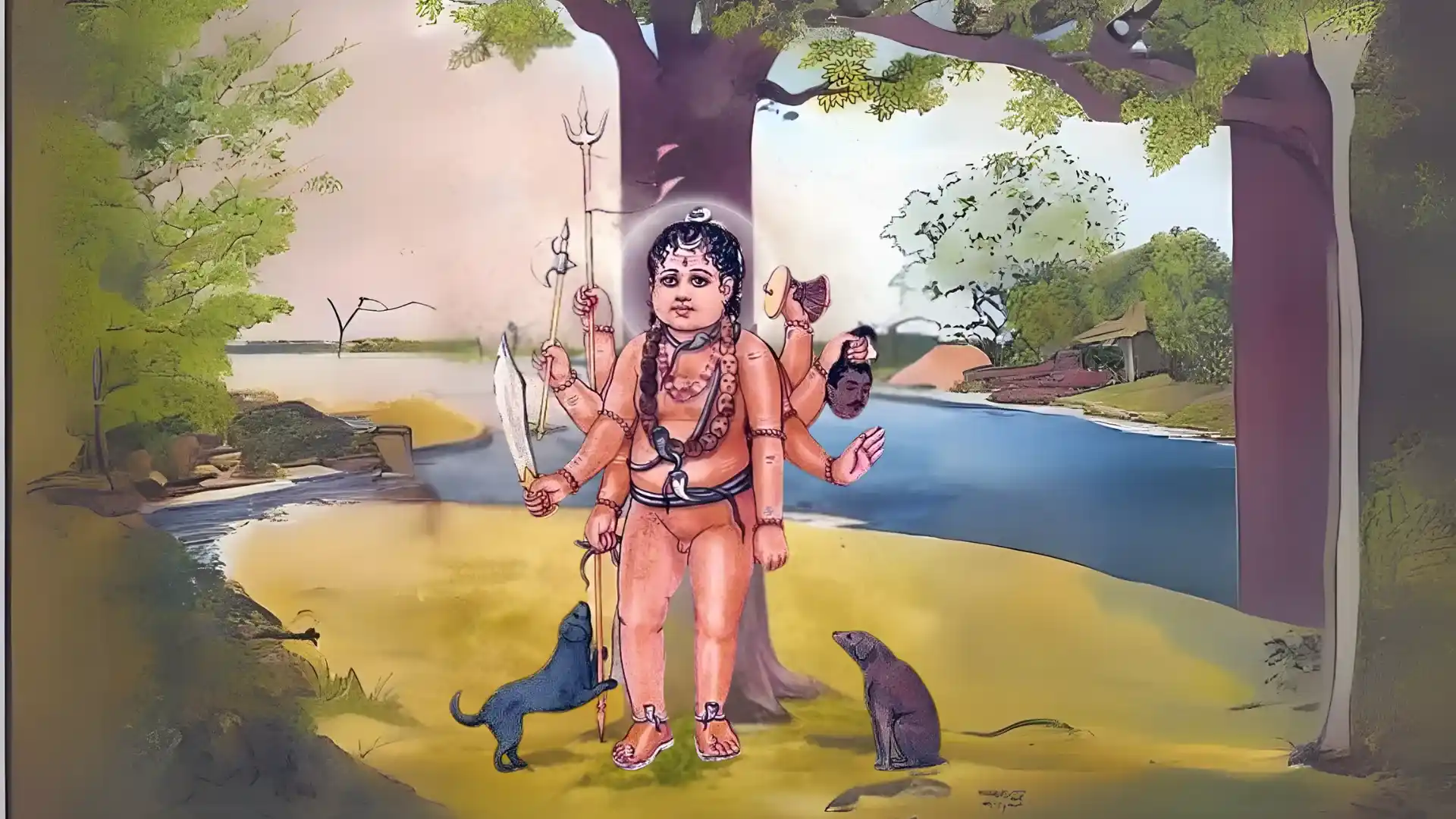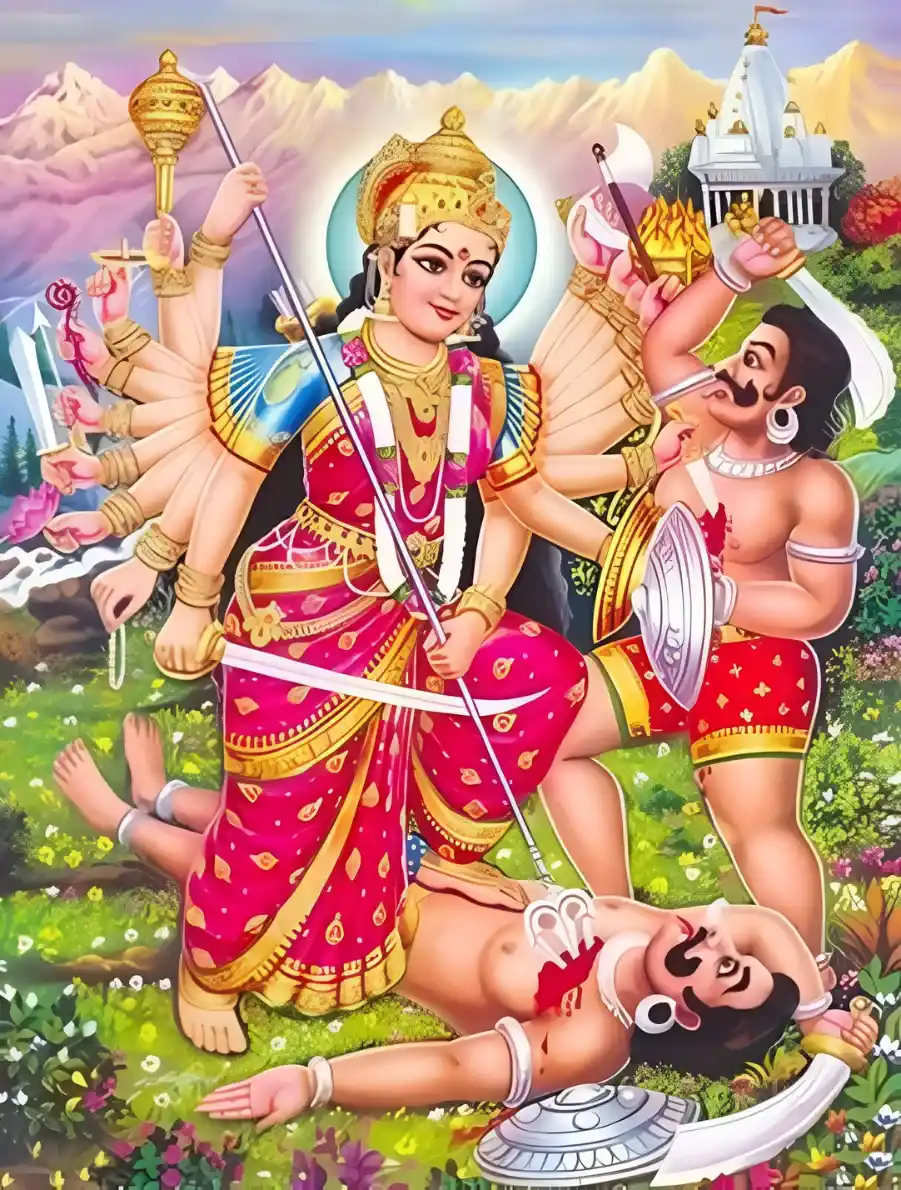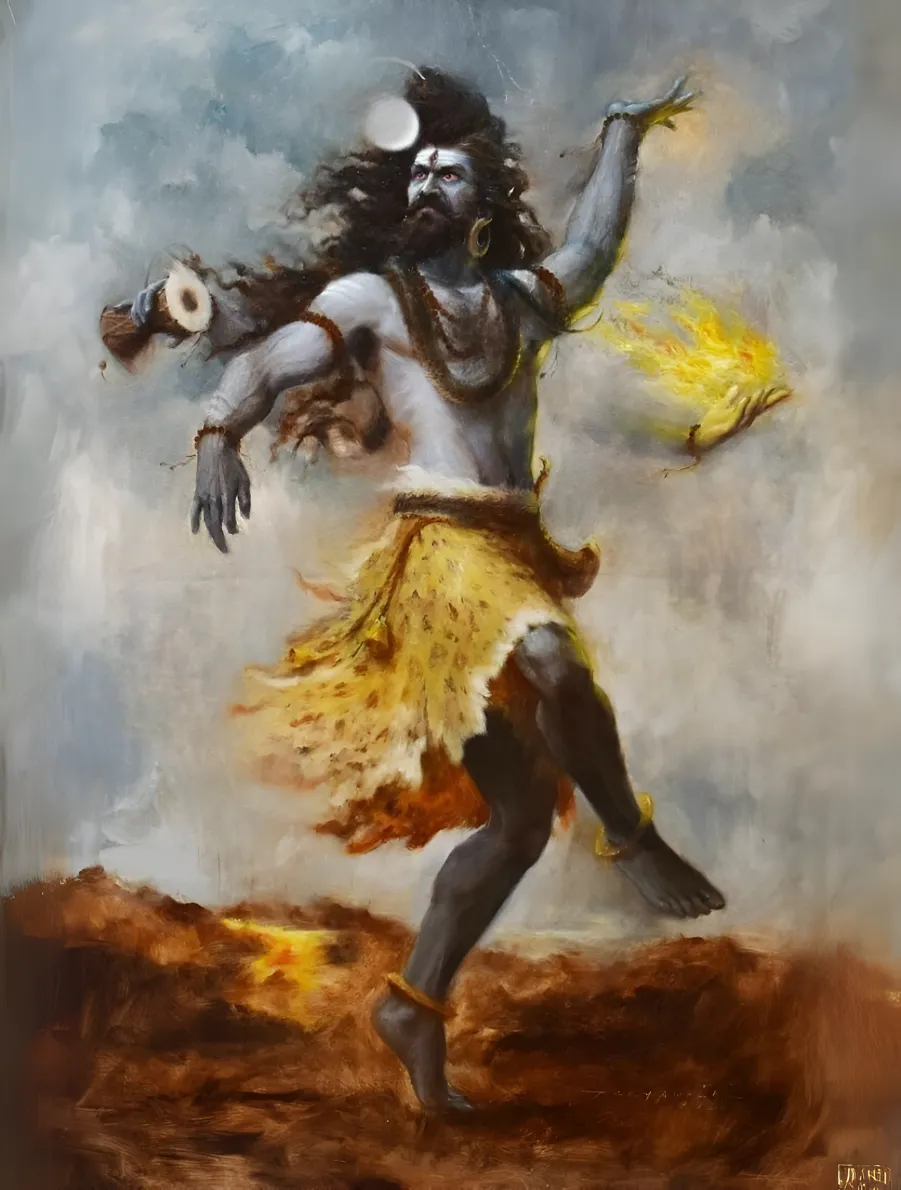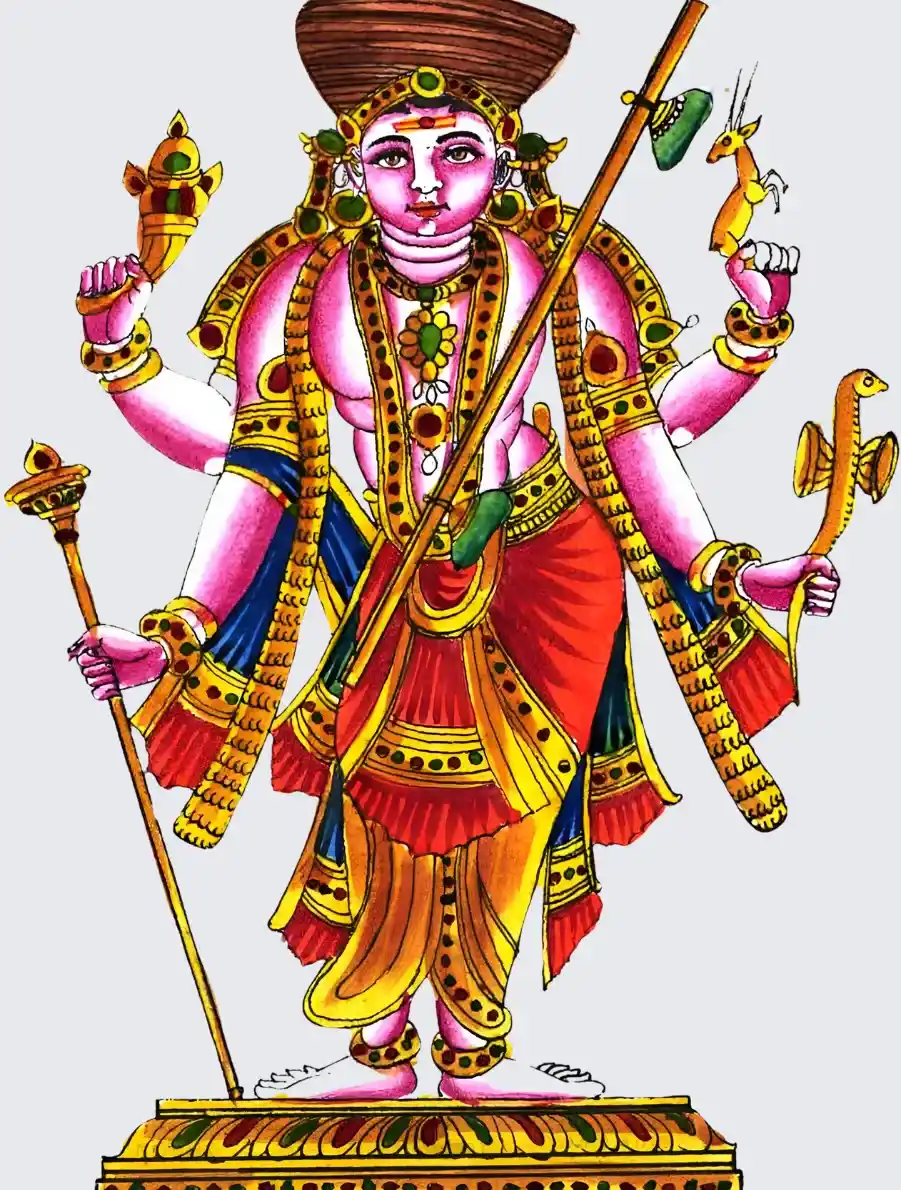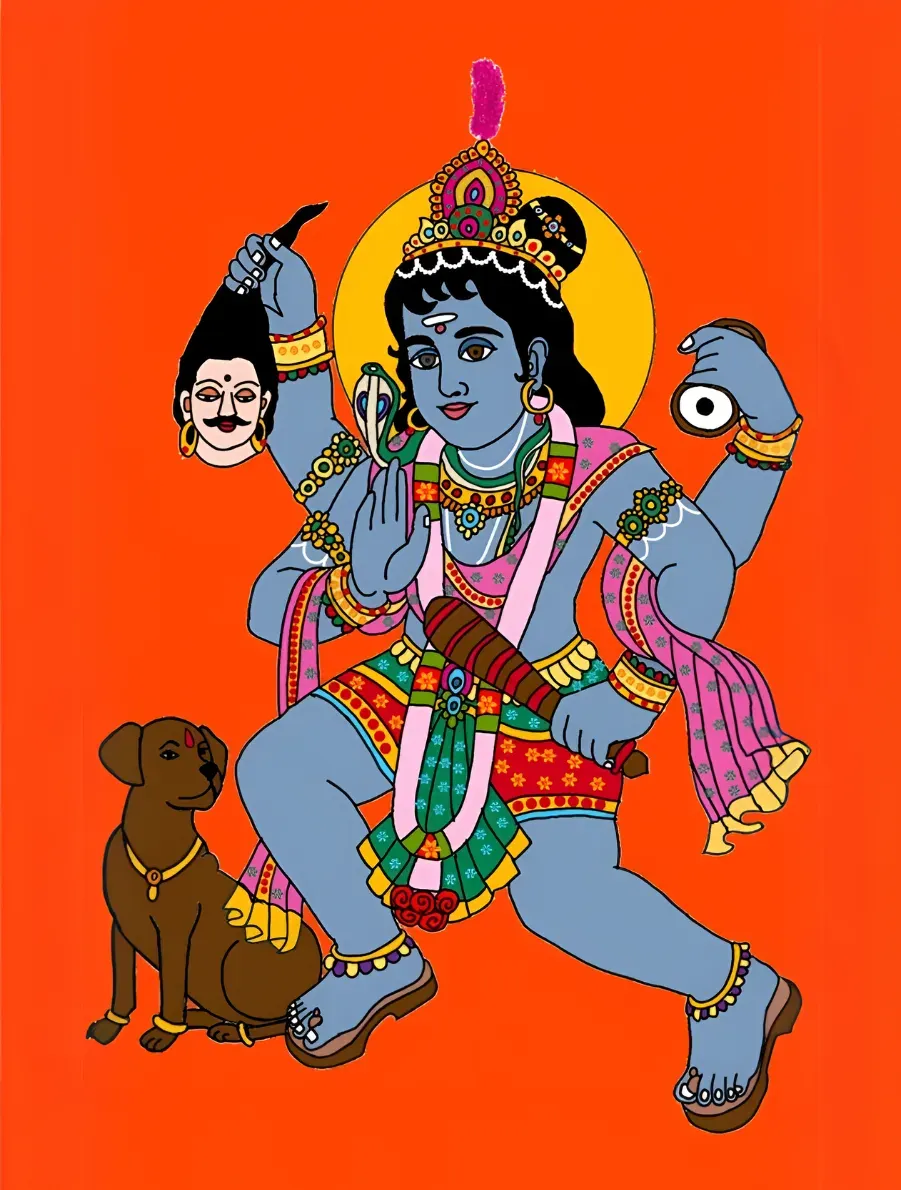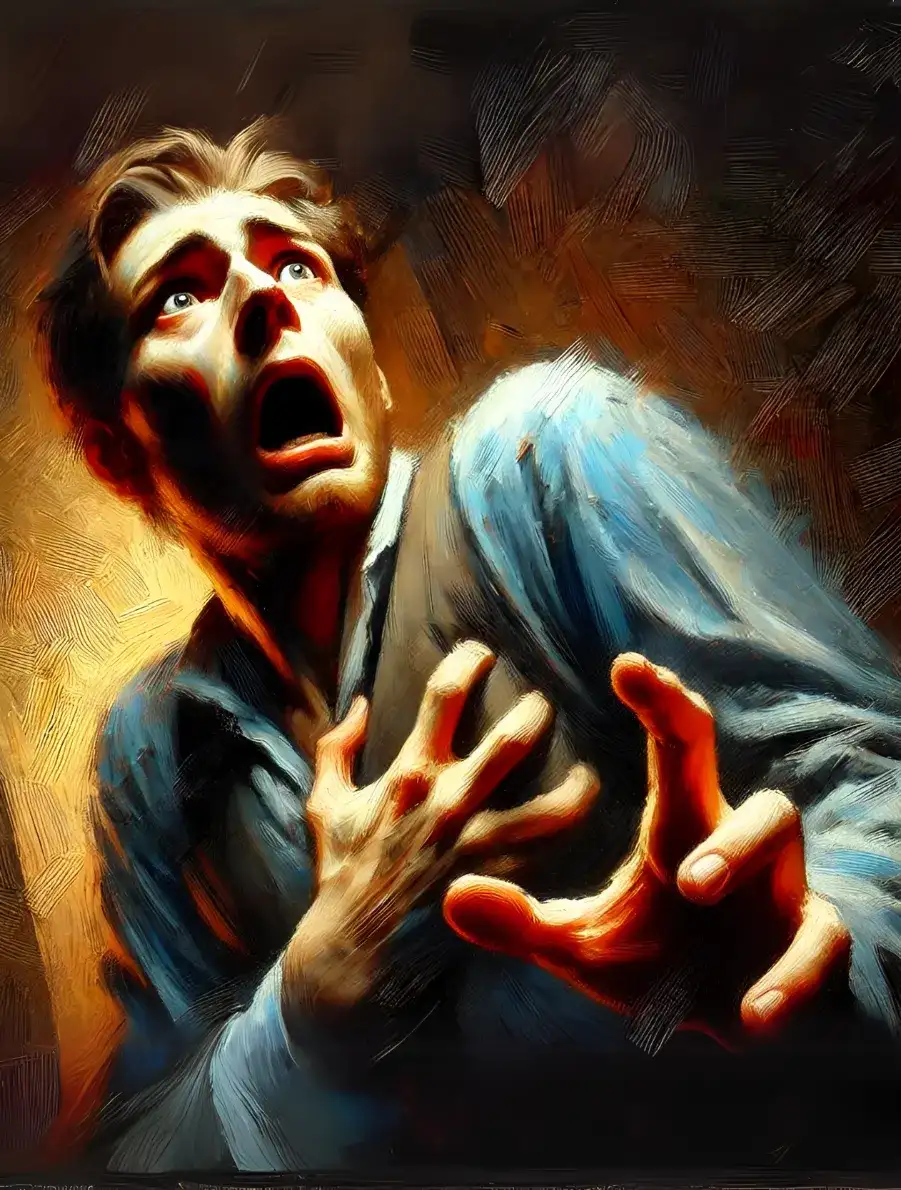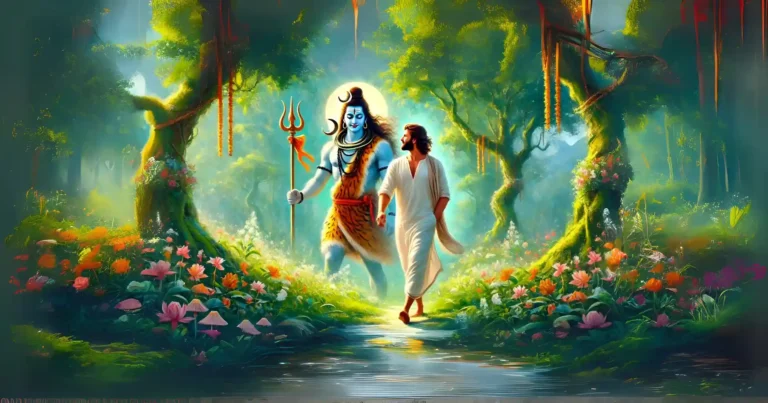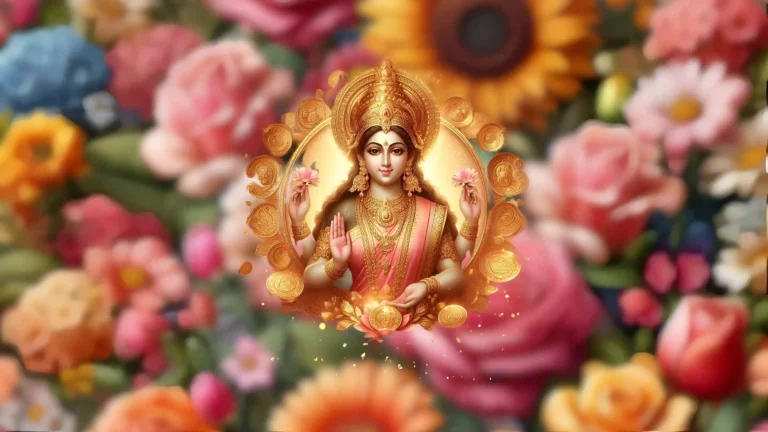Please Like the Blog and Share it for Maximum Reach
Table of Contents
An Important Disclaimer to Ashta Bhairava (8 Bhairavas) Sadhana
It is important to note that personally I do not recommend anyone to perform Bhairava Sadhana. Bhairava Sadhana has to be done under the strict vigilance of a perfected Tantrika Guru, who is selfless and does not desire disciples and is only interested in serving the deity and guides his disciples as a duty towards his Ishta Devata, Bhairava.
My Salutations to Sri Bhairava and Bhairavi
I am presenting this article for only Information sake, at the request of inquisitive sadhakas who wanted to understand the pitfalls of such Sadhanas. I present this Article by first Bowing to the Guru of Gurus Sri Mahadeva and the Universal Mother Srimati Umadevi. I also bow down to the great Expansions of our Universal Parents, namely the Bhairavas, Bharavis, Yoginis and their Material Expansions. Jai Mahakaal.
A Brief Introduction to Sri Bhairava and Yoginis
The forms of Lord Bhairava have both material and spiritual connotations. Deciphering the true essence of Sri Bhairava primarily relies on the individual sadhaka’s inclination to either of the extremities. But, the ultimate goal of every deity of Sanatana Dharma is indeed Moksha. There are 8 forms of Lord Bhairava namely:
Asitāṅga Bhairava
Ruru Bhairava
Chaṇḍa Bhairava
Krodha Bhairava
Unmatta Bhairava
Kapala Bhairava
Bhīṣaṇa Bhairava
Saṃhāra Bhairava.
Each Bhairava represents a unique energy and highlights a distinct attribute of Lord Shiva. The Ashta Bhairavas (8 Bhairavas) guard the eight cardinal directions and each has 8 secondary Bhairavas under their Lordship.
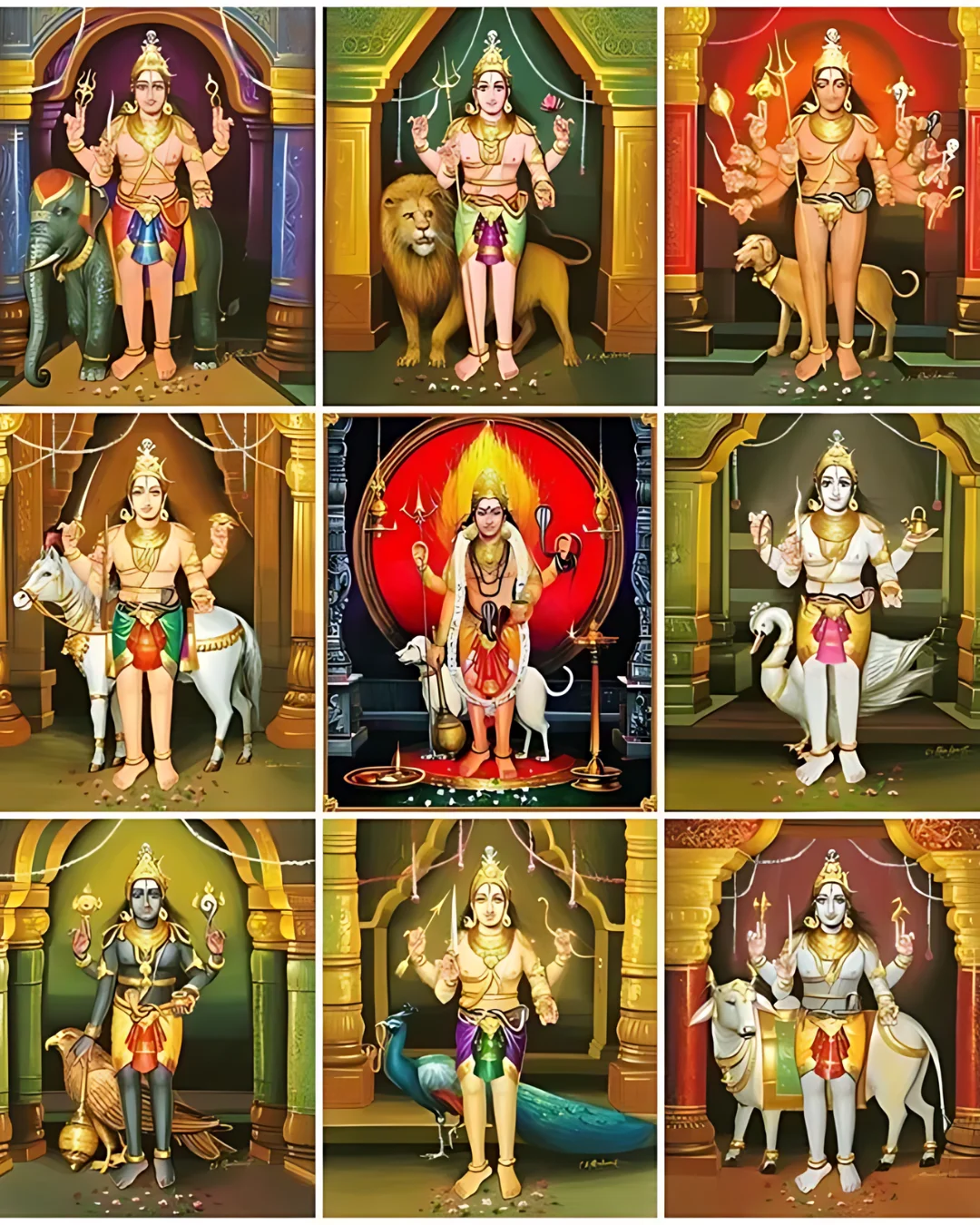
That sums up to a total of 64 Bhairavas. Their female counterparts are known as Yoginis. There are 64 Yoginis who emerged from the Ashtamatrikas to subdue Shumbh-Nishumbh and other demons in warfare.
They are terrifying manifestations of Goddess Durga. The divine couple symbolizes the unification of masculine and feminine power, rooted in Tantric mysticism. The means to appease them is in contrast to the traditional Vedic methods as Tantrik rituals form the premise of invocation.
The divine couple are closely associated with material and darker energies, warning sadhakas to approach them with caution and only under the guidance of an able Tantrika.
Decoding the Essence of the Name- Bhairava
Though there is variegatedness, there are some underlying similarities among all the forms of Sri Bhairava. Bhairava is a Sankrit term and can be interpreted in multiple ways:
The name is derived from the root verb ‘Bhi’ (भि), meaning to terrify or cause fear, Breaking it further:
Bhi (भि) – To fear or to terrify.
Ra (र) – Denotes liberation or fire (symbolizing destruction).
Va (व) – Means to flow or expand.
Considering the root word, the name Bhairava strongly highlights the fierce energy of Lord Bhairava, as the formidable one. Most of his forms are terrifying. Although Lord Bhairava is regarded as the destroyer of fear, by mapping the literal context of His name with the practical experiences of many beginner Sadhakas, He can also induce fear in the minds of the weak (unprepared sadhakas) and evil beings. His appearance and His manifestation powers are beyond our miniscule scope of imagination. Lord Bhairava employs an unconventional approach to destroy fear.
In His name, ‘Ra’ symbolizes destruction or liberation from the Ego while Va symbolizes pervasion of joy that dawns upon subduing the Ego and overcoming fear. To sum up, Lord Bhairava is the prime deity who uproots fear and bestows bliss on His cherished devotees. However, to qualify as His dear remains a challenge.
The Nourishing Nature of Lord Bhairava
The term Bhairava (भैरव) is also derived from the root verb: (भृ) or (धातु) in Sanskrit:
Root Verb (धातु): ‘Bhṛ’ (भृ) – meaning to sustain, support, nourish, or carry.
Suffix: -aṇa or -ava – Denotes the One who possesses or embodies the above mentioned qualities.
Therefore, Bhairava means “the one who sustains or supports”.
Sri Bhairava is thus venerated as a deity who always supports and assists His sincere devotees, through all walks of life. He guides one through their material and spiritual goals, ensuring overall harmony. The name can be interpreted with respect to Lord Shiva as well. Lord Shiva is the upholder of Dharma.
Thus, Sri Bhairava is a corresponding manifestation of Lord Shiva, who employs terror to preserve Dharma. He terrorizes the unrighteous to guard Dharmic individuals. For sadhakas, at a personal level, He employs aggression to uproot negativity thereby preserving their purity and spiritual values.
In many villages Sri Bhairava is installed as the grama devata or village guardian. This norm is much prevalent in the South of India. Alongside, many temples and holy places of pilgrimage have Sri Bhairava as their Kshetrapala (protector). The significance of this tradition relates to Sri Bhairava’s guardianship towards his dear ones, safeguarding them from all calamities on the mental as well as physical plane. He stands by his devotees through every phase of life.
The Powerful Emergence of Lord Bhairava
There are several versions describing the emergence of Lord Bhairava. One of them is from the Maha Shiva Purana. Once, Lord Vishnu enquired from Lord Brahma as to who among the trinity could be regarded as the Suprememost Creator. The strong identity of being the cosmic creator filled Sri Brahma with pride.
Moreover, He began comparing Himself to Lord Shiva as both the divinities possessed 5 heads. Blinded by ignorance, Sri Brahma meddled in the affairs of Lord Shiva. When the intrusion became unendurable, Lord Shiva became red with rage.
He chipped off his toe nail ( in some versions a lock of matted hair) and hurled it to the ground, causing Sri Kaala Bhairava to appear. The latter charged with ferocity towards Sri Brahma and chopped off one of His heads. Sri Brahma realizes the irreplaceable position and the Supremacy of Lord Shiva and surrenders unto Him.
Due to His infinite Grace, Enlightenment was bestowed upon Sri Brahma. This pastime of decapitating the head became the basis of numerous depictions of Lord Kaal Bhairava, mostly with the skull of Lord Brahma attached to His palms.
Another variation suggests that Sri Bhairava emerged from the third eye of Lord Shiva when Sri Brahma lied about discovering the head of the fiery pillar of infinite light (linga) to prove His superiority over Lord Vishnu. Sri Bhairava on being instructed by Lord Shiva severes Sri Brahma’s head.
The Appearance of Sri Bhikshatana (A Form of Lord Bhairava)
As a consequence, the Kapala (skull) gets attached to His palms. The skull served as an indicator for atonement. The sin of assassinating a Brahmin (Brahmahatya) befell on the Lord. Sri Brahma was the first and foremost among Brahmanas, a great scholar and the holiest. The sin of decapitating Him stuck to Lord Bhairava in the form of the skull. On enquiring the means to get relieved of this sin, Lord Shiva asked Him to follow Kapalavrata (vows of a Kapali).
Subsequently, Sri Bhairava took up renunciation as a path to redemption. He swore to roam in the form of a naked mendicant and seek alms in the skull bowl, following the tenets of a Kapali. He epitomised detachment and this magnificent form came to be known as Bhikshatana.
This form is comparatively a gentler form of Lord Bhairava. He has more prevalence in South India. The classical depictions portray him unclothed, bearing 4 arms, trident, matted hair, decorated with ornaments and with the kapala for alms. He is followed by a troupe of devoted demons and women who have Bhakti in Him.
The Appearance of Sri Kankala Bhairava
Sri Bhairava travelled far and wide, across all the three worlds but could not separate the skull from his palms. Finally, Sri Bhairava as Bhikshatana paid a visit to Sri Vishnu in Vaikuntha.
On being denied entry from Vishwaksena (the doorkeeper of Vaikuntha), Sri Bhikshatana fumed with rage. He used his trident to impale Vishwaksena. This form became popular as Kankala Bhairava or the one with the skeleton. However, this act of assassination mounted His sin. As a remedy, Lord Vishnu directed Sri Kankala Bhairava to the holy land of Varanasi.
Kankala Bhairava is yet again a very ferocious form of Lord Bhairava, starkly juxtaposed with Sri Bhikshatana. On entering the sacred city of Varanasi, Sri Bhairava was expunged from His all sins. He remained in the city and was anointed as the Kotwal or the Maintainer of law and order in Kashi by Lord Vishwanath who is the King of Varanasi.
Spiritual Significance Behind the Emergence of Sri Kaal Bhairava
These versions elucidating the appearance of Lord Bhairava have within themselves a deep significance, implicitly suggesting the essential nature of Lord Kaal Bhairava.
Kaal Bhairava appeared as a result of the wrath of Lord Shiva. This indicates His intrinsic guna (nature). By nature, He cannot tolerate vices that instigate one to transgress the decorum of proper conduct. His anger is thus directed towards Sri Brahma who embodies Ego and Pride. Thus, invoking Kaal Bhairava first leads to dissolution of the Ego. Many people are not ready for the first step of surrendering and letting go of individuality and that leads to chaos.
The Aim of Bhairava Sadhana and Mantras
Lord Bhairava is an awe inspiring deity who attracts multiple sadhakas. Sri Bhairava’s Form, Mantras and Sadhanas primarily aim at striking at the root of fear.
All fears have Ego as their pivot. Fear is an evolute of the Ego. Our self-assumed individuality and identity is the root cause of fear.
His Sadhana does not gradually uproot the Ego rather it is one of the quickest and most superfluous mechanisms to transcend the Ego.
However, only a certain class of sadhakas can pursue His Sadhana. Tantra recognizes three temperaments of Sadhakas: Pashu Bhava (the bound individuals), Vira Bhava (the bold and courageous individuals) and Divya Bhava (Spiritual, Divine and Transformative individuals).
Understanding the Pashu Bhava
The Pashu Bhava individuals are bound to materialism. The term Pashu originates from the word Pash (noose), indicating strangulation of the spirit. It also refers to the word Pashu (animal) that relates to characteristics prevalent in animals like being territorial and self-centered. Individuals in this category are instinctual. They have not surpassed the duality of the world and thus acknowledge the current state of life to be permanent.
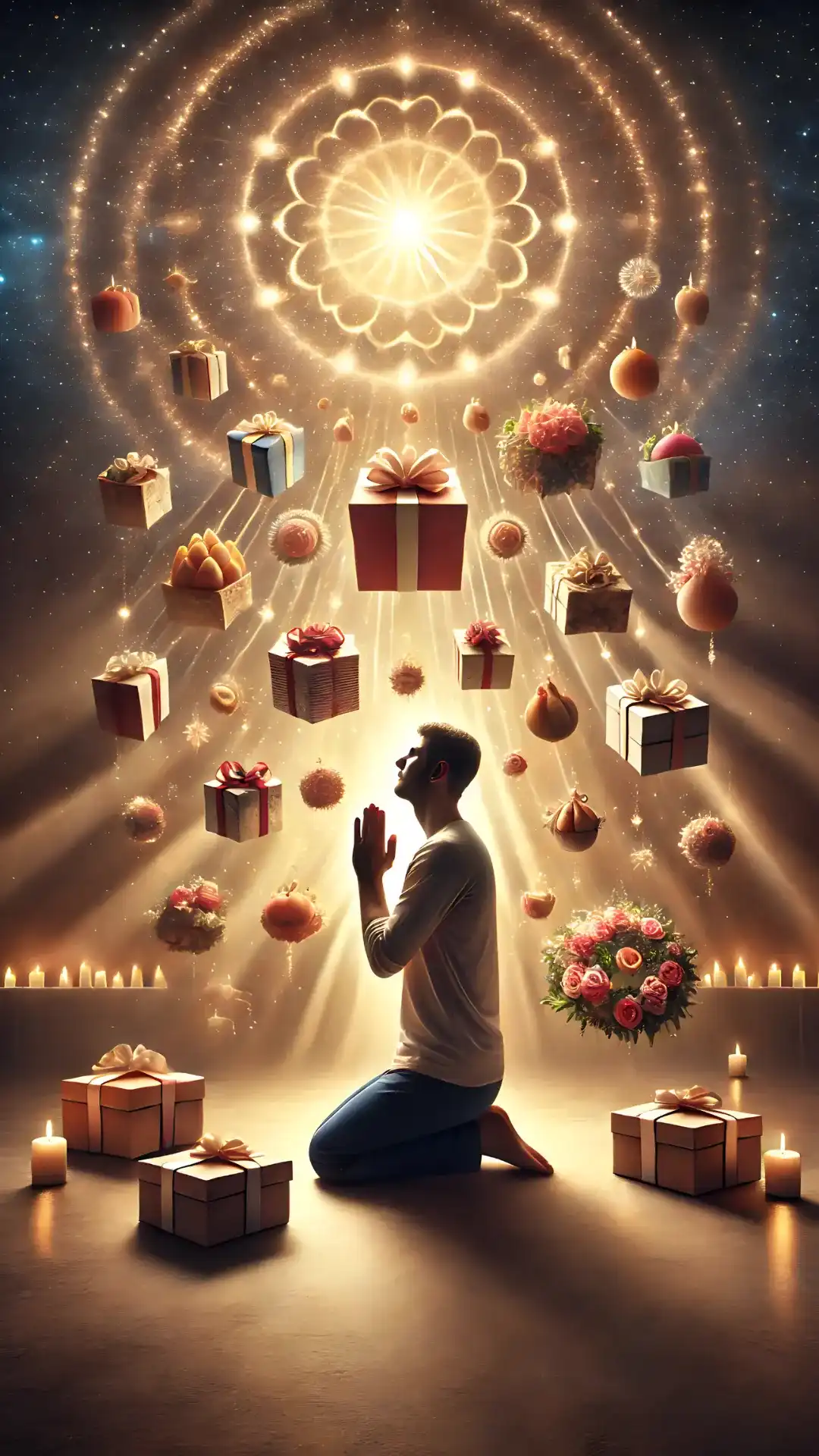
Such individuals have fear, attachment towards family, wealth, body, customs, norms, traditions, reputation, etc in excess. A pashu-bhava individual is also bound by conventional morality, such as fear of the unknown, doubt in tantric methods, strict adherence to ritualistic Vedic practices.
Yantra classifies people with predominant Tamas in the Pashu Bhava. This temperament is least encouraged to take up the left-handed path as they might have to face heavy consequences if lethargy, negligence, sloth and laziness result in the discontinuation of sadhana.

Moreover, Pashus are typically averse to practices that involve risk, spiritual courage, or transcending social norms, which are fundamental to Bhairava Sadhana. However, they may emerge victorious on the path of sadhana if they are fortunate to receive guidance from an able Guru. The Guru creates a personalized process that shall uplift the sadhaka to the Divya Bhava without having to imbibe qualities of Vira Bhava.
Who Should Follow the Tamasik Method of Worship?
A spiritual practitioner can never by oneself decide- which method of worship to adopt. Only a Siddha Guru can assess and guide. Infact, the Guru may also recommend that Sri Bhairava may not be the right deity to invoke!
Traditionally, Kaal Bhairava Sadhana involves intense tantric practices that demand either a Vira Bhava (heroic disposition) or Divya-Bhava (divine disposition).
Understanding Vira and Pashu Bhava
For the ones with Vira Bhava, Tantra needs to be applied practically, under the guidance of the Guru. The practices prescribed for them are generally seen as a violation to the orthodox systems of spirituality.
Tamasik materials used for worship have a symbolism. They aggravate our sense of disgust, pushing us into realizing the existence of duality within our mind. It compels all negativity to surface up which are then nullified through rituals. Tantrik Bhairav Sadhana requires higher bhavas as it aims at transcending conventional notions of fear, shame, and duality, qualities that bind a pashu.
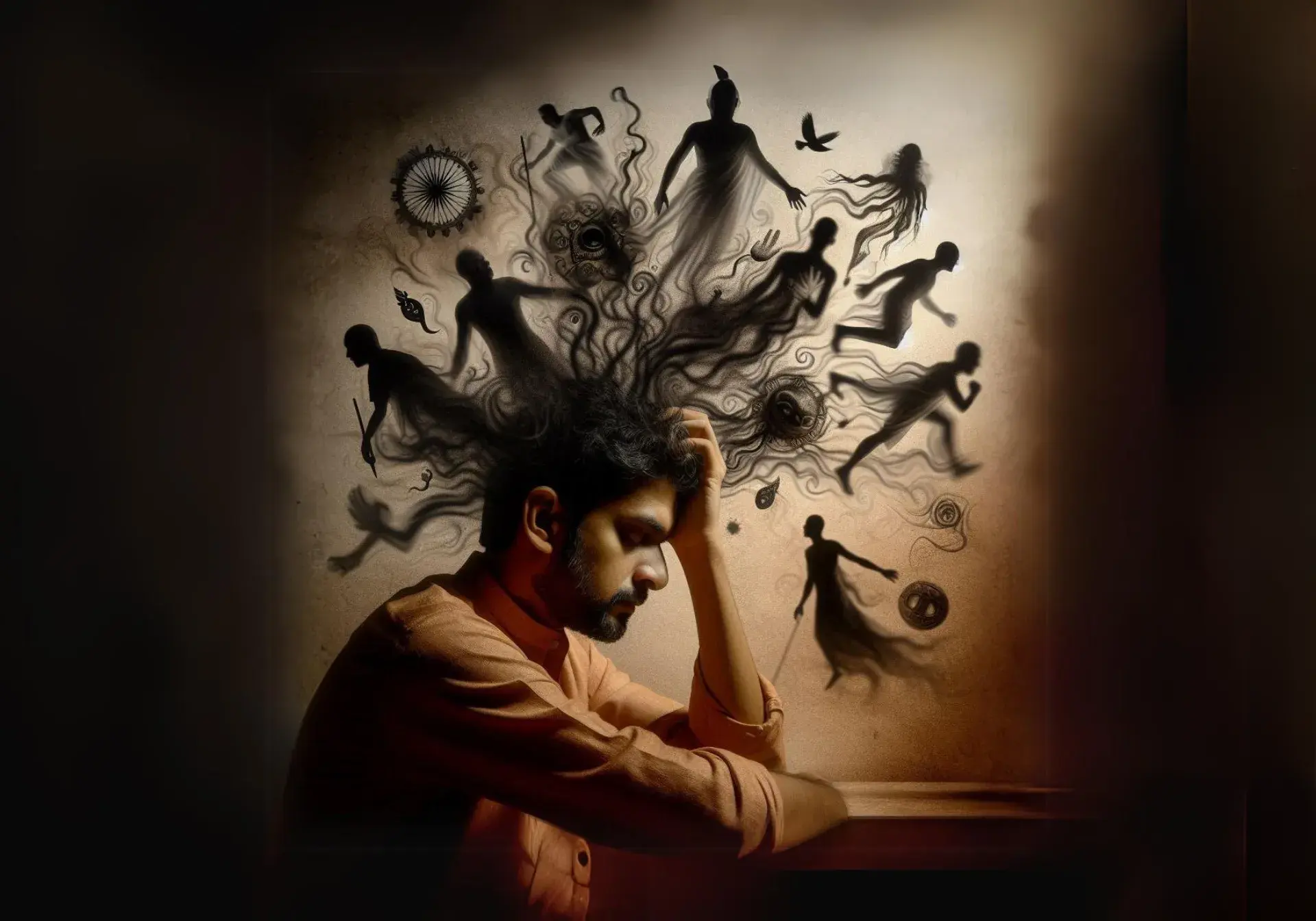
For a Vira Sadhaka, Rajas is predominant driving them to initiate activities. Thus, they need to practically perform rituals to purify themselves and realize the reality. Vira Bhavins have an elevated sense of doership, an attribute of the Ego. However, due to their faith in the deity and the Tantrik system, they lack fear of all kinds. They do not fear society and have a mindset that pays no heed to accepted norms and thus they qualify for Bhairava Sadhana.
However, contrary to this, the sadhakas situated in Divya Bhava (divine disposition) are exempted from applying Tamasik practices. They have an evolved consciousness wherein they identify the universe as indistinguishable from Shiva-Shakti.
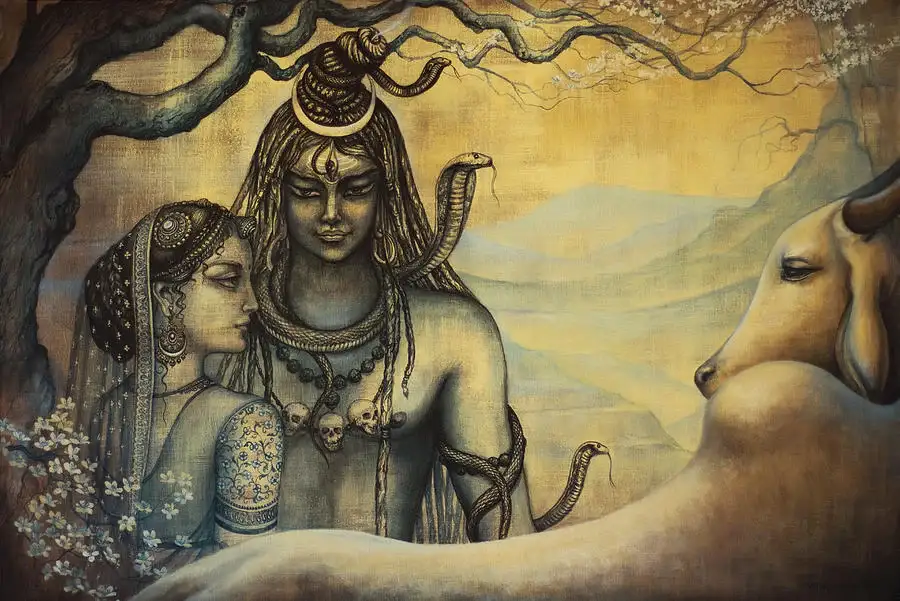
They follow the Tantrik practices in a Sattvik way for they have transcended all pairs of opposites. Some signs of Divya Bhavins are that they perform their daily ablutions and have the most pristine faith in their sadhana and devata. While Divya Bhavins always strive to preserve their Devata-bhava, Vira Bhavins aim at rising to the level of the Divya Bhavin as that is the goal of Tantra Sadhana.
Who is Batuk Bhairava?
Batuka means dwarf in Sanskrit. He is the child-like form of Shiva and the fifth among the Ashta Bhairavas. Batuka Bhairava can be worshiped in Sattvik, Rajasik and Tamasik ways as described in the Sharada Tilaka Tantra (Chapter 20).
The forms of Lord Batuka Bhairava vary, depending on the type of Sadhana performed.
In Sattvika Sadhana, one worships the pleasing form Batuka Bhairava as mentioned in verse 50.
He is a young boy, whose complexion glows like a white crystal. His face beams with child-like joy. He has three eyes and attractive curls. Divine ornaments and 9 kinds of exotic gems cover his body, adding ethereal beauty to his form. His garments are milky white in colour.
He is two handed, holding the trident (the hallmark of Lord Shiva) and a stick (as a guardian). This form aligns with Satvik attributes of purity and devotion. He is supposed to be worshipped using fruits and flowers.
Verse 52 gives the Rajasic version of Batuka Bhairava : —
Here His form is passionate, in hues of the rising sun. Red unguent beautifies his three divine eyes. Lord Vatuka smiles, wearing a garland of red flowers. This form is four handed, two hands comforting his devotees, in gestures of granting boons and dispelling fear, while his other two hands hold Rajasik itineraries, (i.e) a skull and a trident. His throat is blue and a He appears regal being decked with riches. His head gleams with a crescent moon ornament. His garments are red as the Bandhuka flower.
Finally, Verse 53 describes the Tamasic form of Sri Vatuka Bhairava■
The Lord’s form is deep and dark like a blue mountain. He has terror striking fangs and His hair is unusually tawny (light yellowish brown). The Lord adorns a crescent moon on his forehead and has three grave eyes.
Serpents and a garland of heads sway on his body. His feet dazzle with jewelled toe rings. He has 8 arms holding a snake, a bell, a skull, a drum, a goad, a sword, a noose and the fear-removing gesture.
Note: Based on the form’s ferocity, the number of arms keeps increasing. Rajasik and Tamasik Sadhana need strict adherence to the laid rules and the supervision of an adept spiritual master.
The Sattvika Form delights pure-hearted beings who seek longevity, and Liberation.
The Rajasa form satisfies self-centred individuals who only desire Dharma, Artha and Kama, excluding Moksha. The gains obtained here are limited to the material platform.
The Tamasic Form is initiated by evil souls seeking to injuring their enemies, counter negativity and play with the dark forces of nature.
Should we Perform Tantra Sadhana for Material Gains?
When we perform Sadhana for material gains, our primary focus is on the result. This approach itself is flawed and violates the rules of Tantra. Infact, such an approach yields no results in Tantra or Bhakti Marga. Desire to attain boons for material comforts rather than spiritual transformation causes people with Pashu disposition to retain their bound condition.
They repeatedly cycle through phases of contentment and dispairment. The first criteria to begin Bhairava sadhana is the intention to attain Divine Realizations. Sri Bhairava who is the destroyer of all kinds of Fear. When appeased, He shall make His presence felt in a very conspicuous manner, securing our material and spiritual requirements. Then there remains nothing more to seek.
Can we Chant any Bhairava Mantra or Perform Bhairava Puja?
Typically Sri Bhairava Sadhana is meant for people who have transcended the stage of family life or have committed themselves to the spiritual path. This is because one-pointed focus and isolation are mandatory to perform Bhairava Sadhana.
However, if one is a householder, student or working, Tamasik Vidhi of worship is strictly prohibited, although it is the conventional method of worship. To take up Bhairava Sadhana, one should approach a Siddha Guru who is entitled to craft a sadhana for you. He should have Siddhi in Bhairav Sadhana. This shall prevent disharmony. Also the student has to live with the Guru during the course of sadhana Sankalpa.

Kindly note, when taking up sadhana for deities like Kaal Bhairava, Kali devi, etc, the role of the Guru becomes indispensable as not all mantras and methods of worship are recommended. Almost all mantras require formal initiation. When chanted otherwise, they may yield counter results.
Many a times, sadhakas get into Bhairava Sadhana due to the esotericism of the deity, without considering the repercussions of it. Instead of overcoming fear, one tends to feel duller and depressed due to incorrect methods of invocation and the unconventional behavioural traits of the Tantrik deities.
A Brief Introduction to the Pros and Cons of Bhairava Sadhana
Although Sri Bhairava is beyond the 3 gunas, He is categorized among the Tamasik classes of deities due to His close proximity with skulls, snakes, cremation grounds, anger, etc. In the spiritual context, these items are reflective of our inner guna of Tamas. Contemplating these dark symbols which complement the form of Sri Bhairava may cause a momentary surge of negativity. The practice may initially seem to reinforce Tamas within us. However, when done incorrectly or left incomplete, these experiences can prolonged introduce deep depression.

A successful Bhairava Sadhana relieves one from all material problems, encouraging the sadhaka towards the ultimate goal of liberation. Along with the Ego, the Lord destroys our ignorance too, thus liberating one from the repeated cycles of birth and death. One of Sri Bhairava’s exquisite forms, Kaal Bhairava is renowned for His Lordship over time. Thus, He ferries His devotees across the shore of time, into a realm where time does not exist. Birth, Death, Suffering, Aging, etc are all indicators of time.
They are an outcome of time. However, for a Kaal Bhairava devotee, life processes and events take place, but leave no trace in the mind of the sadhaka. This state is attained due to the benevolence of Sri Kaal Bhairava.
An Account of Experiences During Kaal Bhairava Sadhana
If one does not embrace spiritual transformation, Kaal Bhairava Sadhana can prove detrimental. Many have reported hearing reverberating footsteps, growls like those of dogs and absurd voices. People have simultaneously had outer body experience, as well as felt trapped in a loop of events. Sri Kaal Bhairava dominates over time and death. Thus, before pulling one out of its mesh, He ensures that the Sadhaka experiences time and even death in its full magnitude within the predefined course of Sadhana.

However, these are intermediary stages of Bhairava Sadhana. These paranormal and psychologically distorted experiences can prolong if not guided by a siddha guru. It may also cause an intractable defect in one’s personality.
Kaal Bhairava or any other type of Bhairava Sadhana aims at facing and going past our wildest fears. Thus, during the course of the sadhana one experiences heightened levels of fear.
Moreover, the fear of death manifests in the most amplified manner. Frequent visions of skulls and flames keeps the sadhaka reminding of our temporary visit to this planet. One begins to feel detached from family members who in turn may appear very expressive. This is a test put forth to assess the sincerity of the sadhaka. The key lies in not falling prey to attachment and holding the feet of Guru who shall pull one out of this mirage.
7/8 Questions from Sanatana Dharma
The scores generated in this Quiz may or may not be absolute. There may be right or wrong answers to each Question. A percentage towards 100 indicates that you are more aligned to the overall subject matter.
Experiencing the Presence of Other Beings During Bhairav Sadhana
Sri Kaal Bhairav is the direct and complete manifestation of Lord Shiva. Goblins, Yakshinis, Pishachinis, etc are his subordinates. Thus, a sadhaka must overcome the fear of encountering them to get closer to the Lord.
They represent various aspects of our flawed mind and warped perceptions. Thus, to fix these frailties, the mantras and rituals performed to invoke Sri Kaal Bhairava brings to light, our fears and other negativity in the form of goblins, yakshinis, pisachinis, etc in a more pronounced way.
Some witness them in dreams or hallucinate them in person, while certain others symbolically deal with their lower tendencies which coincide with their nature. Some Sadhakas may feel that people around are behaving like them.
Only when a Bhairava Sadhaka becomes indifferent to the presence of lower energies can one rise above them.
Some Vamachara traditions and scriptures like Bhutadamara Tantra have prescribed Apsara, Yakshini, Pishachini Sadhanas as auxilliary practices for worldly accomplishments before moving towards Unmatta Bhairava Sadhana, which demands mental purity and higher consciousness.
However, there are some other traditions that completely reject and discourage aspirants to pursue such deities as they embody crude material energies. Mingling with them through rituals and mantras, may lead to life-threatening situations. Instead of coming close to Sri Bhairava, these forces shall bewilder sadhakas, urging them to pursue material life with full vigor.
If a sadhaka slips into appeasing such deities to gain their powers for selfish purposes, they shall have to serve them in their realm even as long as the day of Brahman that is approximately 4.32 billion human years. These energies are devised in a way to cause distraction. Only a sadhaka with firm conviction and purity of intention can attain Sri Bhairava. Others get estranged and ultimately fall prey to the subordinates like Yakshinis, Pishachinis, Dakinis, etc, thus drifting away from the goal of liberation.
Some Immediate Lessons from Seeming Spiritual Experiences
As a former practitioner of some of these Tantrika Sadhana Vidhis, I would like to again remind the readers of this Article that all such experiences are only a massive Play of Maya, the Sullied aspects of Brahman that cloud the clarity of the Self-Illumined Atman.
This Bewildering experience is just a Shadow of Obstacles, which appears more real than the real and yet they are mere projections of the unillumined dark elements that cover our being. This is the dark path that one takes to reach the other end of the tunnel where the Absolute Brilliance of Brahman prevails.
Since this is the dark Path, there is also a rather brighther tunnel , which one can take, through Vaishnava Tantra, where safety prevails. Bhairava Sadhana can prove extremely detrimental if the Guru has not attained Siddhi and shall not be able to regulate these dark experiences, if he himself has never been a witness to such experiences and/or has not already reached the platform of Self-illumination.
So Beware and think a million times before you attempt such practices, because you may be risking your entire being or eternal peaceful existence.
Consequences of Inappropriate Bhairav Sadhana
Sri Bhairava and these other energies are unforgiving. They are ferocious by nature. Aiming to attain material gains through subtle entities comes with a heavy price. The sadhaka with such an intent undergoes very vivid, yet abnormal experiences which seem to materialize on the physical plane.
Sadhakas who have erred in Tantrik worship hear voices which nobody else can hear. The experiences eventually become overwhelming for the sadhaka, leading to untreatable psychological conditions and hallucinations.
Thus, these sadhanas can hinder our day-to-day life by inducing heightened levels of vulnerability and fear. Many Sanskrit manuscripts warn us from venturing into these dark paths.
One such reference is as follows:
cailokyadhipatim raudram surasiddhanamaskrtam | unmatta bhairava natva prcchatyunmatta bhairavi ||
चैलोक्यधिपतिम् रौद्रम् सुरसिद्धनमस्क्र्तम् | उन्मत्त भैरव नत्व प्र्च्छत्युन्मत्त भैरवि ||
Having bowed to Unmatta Bhairava, the Lord of the three worlds, who is fierce and worshipped by gods and siddhas, Unmatta Bhairavi (His female counterpart) asks Him for guidance.”
Further, there are guidelines elucidated by the Great Lord which finally concludes with:
anyatha krodharajena vinaso bhavita tava |
अन्यथ क्रोधरजेन विनसो भवित तव
meaning-
“Otherwise, the wrathful king (Krodha Bhairava) will bring about your destruction.”
Here, Unamatta Bhairava emphasizes the uncompromising adherence to the vidhi (guidance along with unmistakable ritualistic approach) provided by Him according to the Tantrik Scriptures. The gravity of the process is transmitted by the siddha tantrika guru to the disciple.
Only then can the process be error-free. Yet, the nuances and nitty-gritties are such that a sadhaka may at any time fall from the path. Sri Unmatta Bhairava says: “Any error or negligence can call down the wrath of Krodha Bhairava”
Krodha Bhairava is one among the Ashta Bhairavas, who embodies anger. This statement of the Lord highlights the seriousness of Tantric rituals. Acknowledging one’s incapability is crucial to remain safe. Adopting Sattvik Sadhana (most preferably) to invoke Sattvik forms of the Lord not only shapes your inner spiritual self but also safeguards you from the consequences of an inadequately performed Tantrik ritual.
So we have to understand the Nature of this Yuga ( Kaliyuga, an age full of Faults), and then decide whether we take the Dakshina Marga ( Such as the Satvika Traditions of Vaishnavism and Shaivism) or the Vamachara Marga ( The ferocious Tantrika Traditions).
Please Like the Blog and Share it for Maximum Reach

